http://rt.com/news/179212-ukraine-militia-ready-ceasefire/
Consider the connection between Ron Paul's hint and the Consortium new article directly below the info War piece !
http://www.infowars.com/ron-paul-us-hiding-truth-on-downed-malaysian-plane/
http://consortiumnews.com/2014/08/08/was-putin-targeted-for-mid-air-assassination/
Ukraine through Russia eyes......
http://www.zerohedge.com/news/2014-08-08/how-putins-advisor-sees-ukraine-crisis-playing-out
Who blinks first - Ukraine or Europe ?
http://globaleconomicanalysis.blogspot.com/2014/08/ukraine-threatens-to-block-gas-to.html

Bluff or Stupidity?
My first thought was this is an obvious bluff. However, sanction madness is so ridiculous, Ukraine might do it as an act of one-up stupidity.
****
http://rt.com/news/179164-ukraine-violence-war-arms/

 MOSCOW, August 08. /ITAR-TASS/. The Russian oil pipeline company Transneft is ready to redirect Europe-bound oil exports away from the Ukraine transit route, Transneft spokesman Igor Dyomin said on Friday.
MOSCOW, August 08. /ITAR-TASS/. The Russian oil pipeline company Transneft is ready to redirect Europe-bound oil exports away from the Ukraine transit route, Transneft spokesman Igor Dyomin said on Friday.
Transneft earlier said it could re-channel oil supplies through Russian ports, primarily via the Druzhba pipeline’s northern section and the port of Ust-Luga to the Mediterranean ports of Trieste and Omisalj. Transneft could also use oil swap deals but a route change would slightly push up the cost of oil deliveries, the company said at the time.
Anti War.....
 The military reported that with the help of other troops who were not encircled, they managed to create an “escape corridor,” but 15 troops were killed and 79 others wounded in the fight.
The military reported that with the help of other troops who were not encircled, they managed to create an “escape corridor,” but 15 troops were killed and 79 others wounded in the fight.
Donetsk militia ready for ceasefire to prevent further humanitarian catastrophe
Donetsk region militia says it is ready for a ceasefire to stop the humanitarian catastrophe deteriorating, the self-proclaimed Republic's prime minister said.
“We hope that the international community will influence the bloodthirsty Kiev government,”Aleksandr Zakharchenko said as cited by RIA Novosti. “But in the case of Ukrainian army aggression continuing, our people’s militia will fight with any balance of forces and in any conditions,” he said.
The self-proclaimed Republic's prime minister confirmed Kiev forces surrounded Donetsk on Saturday. Briefing on the current situation there, he said “there is a humanitarian catastrophe in the city.”
“People are dying in shelling. In the case of a storming of the city, the number of victims will increase. Today there are absolutely no humanitarian corridors. Medicines can’t get into Donetsk and food supplies are running out. Because of the blockade and bombardment, it is impossible to repair the destroyed municipal network,” Zakharchenko said. He added the city has problems with water supplies and power.
The statement comes as the UN voiced serious concerns over the situation in eastern Ukraine.
“Innocent civilians trapped in the fighting continue to lose their lives,” UN Secretary General Ban Ki-moon said on Friday.
Ban promised that the UN will continue to "actively and closely" follow the situation, and if there is further deterioration of the humanitarian situation, or if nationally-led response efforts are not sufficient to meet humanitarian needs, the organization will be "ready to consider additional measures of support."
The UN chief also praised Kiev for handling the situation at this stage "appropriately."
Despite increasing numbers of refugees fleeing to Russia and the continuing fighting in eastern Ukraine, Ukrainian officials deny that the region is on verge of a humanitarian catastrophe.
The eastern Ukrainian city of Lugansk declared a state of humanitarian catastrophe on Tuesday, as there are no medical supplies, electricity, or lighting, as well as a lack of mobile and internet communication. Some 250,000 civilians are unable to leave, a statement on the city council website said.
Russia's Ambassador to the UN, Vitaly Churkin, is calling for an international humanitarian mission to be launched. Whereas Ukraine’s envoy to UN Yuriy Sergeyev said the situation in eastern Ukraine is manageable by the government, adding that there is no humanitarian crisis.
On August 4, Russia’s Foreign Minister Sergey Lavrov proposed humanitarian convoys, saying that Russia was ready to provide humanitarian assistance to its neighbor “on our own.”
The International Committee of the Red Cross (ICRC) supported the proposal, saying that “the ICRC acknowledges receipt of the offer from the Russian Minister of Foreign Affairs, Sergey Lavrov, about organizing aid convoys to the affected areas in Ukraine.”
Kiev officials claimed a Russian "humanitarian convoy" was stopped from crossing the border on Friday over fears it was an attempt by Moscow to invade Ukraine.
"Supposedly in consultation with the International Committee of the Red Cross in Ukraine, the humanitarian convoy with 'peacekeepers' was meant to enter apparently in order to provoke a full-scale conflict," Valeriy Chaliy, deputy head of Ukrainian President Petro Poroshenko's office said.
Russia has denied Kiev’s claims that Russian military attempted to infiltrate Ukrainian territory.
“We struggle to understand what the Ukrainian side means. There have been no attempts of infiltration by the Russian army,” said President Vladimir Putin’s spokesman, Dmitry Peskov.
The Red Cross, at the same time, also denied allegations the organization was involved in any such "humanitarian convoy."
ICRC spokeswoman Sitara Jabee told AFP that if all sides in the conflict were to agree, the ICRC could potentially receive aid from Russia.
But so far, "nothing has been done," she said.
Consider the connection between Ron Paul's hint and the Consortium new article directly below the info War piece !
http://www.infowars.com/ron-paul-us-hiding-truth-on-downed-malaysian-plane/
RON PAUL: US ‘HIDING TRUTH’ ON DOWNED MALAYSIAN PLANE
"The U.S. government has grown strangely quiet on the accusation that it was Russia or her allies"
Former Rep. Ron Paul (R-Texas) accused the U.S. government of “hiding” the truth behind the downing of Malaysia Airlines Flight 17, which crashed in eastern Ukraine last month.
“The U.S. government has grown strangely quiet on the accusation that it was Russia or her allies that brought down the Malaysian airliner with a Buk anti-aircraft missile,” Paul said on his news website Thursday.
U.S. officials believe the plane was brought down by a missile likely fired by pro-Russian separatists in Ukraine, killing all 298 people on board. The U.S. and Europe have slapped tougher sanctions on Moscow for providing the rebels with weaponry and assistance.
Paul, though, questioned that account and said the U.S. could be more forthcoming with information.
http://consortiumnews.com/2014/08/08/was-putin-targeted-for-mid-air-assassination/
Was Putin Targeted for Mid-Air Assassination?
Ukraine through Russia eyes......
http://www.zerohedge.com/news/2014-08-08/how-putins-advisor-sees-ukraine-crisis-playing-out
This Is How Putin's Advisor Sees The Ukraine Crisis Playing Out
Submitted by Tyler Durden on 08/08/2014 17:03 -0400
- Australia
- China
- Estonia
- Germany
- Gross Domestic Product
- Latvia
- Lithuania
- Norway
- Reserve Currency
- Trade War
- Ukraine
- Yuan
Vladimir Putin's chief "integration" advisor, Sergei Glazyev, has been regularly featured on these pages in the past (see Putin Advisor Threatens With Dumping US Treasurys, Abandoning Dollar If US Proceeds With Sanctions and Putin Advisor Proposes "Anti-Dollar Alliance" To Halt US Aggression Abroad for two examples). So now that the Ukraine situation has once again escalated, this time with both sides openly engaged in trade war and many suggesting all-out war just over the horizon, how does Putin's advisor see the Ukraine conflict playing out?
For the answer we go to Bloomberg:
Putin has sought to lure Ukraine and its more than 40 million people into the alliance to build a trading bloc to rival the EU. Yanukovych pursued closer ties with the customs union and pulled out of an association agreement with the EU before his ouster in February. His successor, President Petro Poroshenko, signed the free-trade accord with the 28-nation bloc in June.Russia can’t go it alone against the U.S. and must create an “anti-war coalition” to check the “aggressor,” Glazyev said.“The point of a series of regional wars organized by the Americans, especially today’s catastrophe in Ukraine, centers on the U.S. securing control over all of north Eurasia” to bolster “its position against China,” Glazyev said. “That’s how the U.S. military and oligarchs are trying to maintain leadership in the global competition with China.”The effort will backfire, said Glazyev, who spoke before a round of retaliatory steps announced by Russia yesterday banning food and agricultural products for one year from the U.S., the EU, Norway, Canada and Australia. The U.S.-led “economic war” against Russia will ricochet, leaving the EU to pay the steepest costs in the conflict, he said.The trading bloc stands to lose about 1 trillion euros ($1.3 trillion), an estimate he says includes the possible bankruptcy of several European banks and companies toppled after the cutoff in financial and economic ties. An energy crisis in Europe will bring a sharp spike in prices and a loss of competitiveness for European producers.Meanwhile, Turkish, Chinese and east Asian nations will fill the void left by the departure of their European rivals from the Russian market.The fallout will cost 250 billion euros for Germany alone while pushing the three Baltic states to the brink of an “economic catastrophe,” he said.Lithuania and Latvia will lose the equivalent of half of their entire economic output, and the cost for Estonia will reach 50 percent more than its gross domestic product, Glazyev said.
Where does that leave Russia?
“Task no. 1 is to block those threats to economic security that are now coming from the U.S., neutralize them by reducing the dependence of our external economic activity on the mercy of American politicians, whose aggressiveness threatens the entire world,” he said.
Glazyev's conclusion:
To further insulate its economy, Russia should abandon the use of the U.S. dollar as a reserve currency, according to Glazyev. Russia, which international reserves are the world’s fifth-biggest,needs to diversify its holdings to include China’s yuan, India’s rupee and Brazil’s real. “If a country aspires to reserve status for its currency, it should behave properly, and that isn’t the case today,”Glazyev said.
And this is how Putin sees the world. De-escalation? Good luck.
Who blinks first - Ukraine or Europe ?
http://globaleconomicanalysis.blogspot.com/2014/08/ukraine-threatens-to-block-gas-to.html
Friday, August 08, 2014 10:50 AM
Ukraine Threatens to Block Gas to Europe; Bluff or Stupidity?
Sanction madness has gotten so silly now that Russia may not have the option to play the nuclear card of blocking gas to Europe. Ukraine might play that card first.
Please consider Ukraine May Block All Transit from Russia in Sanctions Row
Please consider Ukraine May Block All Transit from Russia in Sanctions Row
Ukraine ready to impose sanctions against any transit via its territory, including air flights and gas supplies to Europe, Prime Minister Arseniy Yatsenyuk said Friday.Gas Pipelines
Kiev has also prepared a list of 172 Russian citizens and 65 companies predominantly Russian to put under sanctions for “sponsoring terrorism, supporting the annexation of Crimea, and violating the territorial integrity of Ukraine,” Yatsenyuk said at a briefing on Friday.
Proposed sanctions include asset freezes, bans on certain enterprises, bans on privatizing state property, refusing to issue licenses, and a complete or partial ban on transit- both aviation and gas.
“We simply have no other choice,” the Prime Minister said, adding that Ukraine will use part of the planned $17 billion IMF aid to achieve energy independence, and may go to the World Bank for help. The country, which is on the brink of economic default, received the first $3.2 billion tranche in May.
Ukraine wants to “put a stop” to its gas dependence on Russia, its main source for energy to heat homes and buildings, but understands it will not be an “easy” process, Yatsenyuk told reporters.
The Prime Minister estimates Ukraine could stand to lose $7 billion as a result of imposing sectorial sanctions against Russia, its biggest trading partner after the European Union.
If approved, a halt to Russian gas transit would hit Europe as the continent gets 15 percent of the energy it needs from Russia. In June Gazprom, Russia’s national gas company announced it was stopping deliveries to Ukraine, but would continue to ship 180 billion cubic meters of gas to Europe.
The falling out with Russia’s gas major over pricing and debt has forced Ukraine to cut back on its heavy use of energy. Until the winter, homes will go without hot water to cut gas consumption by 30 percent.
On top of that, Ukraine is also exploring reverse flow options; importing gas from neighboring European countries.

Bluff or Stupidity?
My first thought was this is an obvious bluff. However, sanction madness is so ridiculous, Ukraine might do it as an act of one-up stupidity.
****
http://rt.com/news/179164-ukraine-violence-war-arms/
Ukraine’s violent escalation: From Molotov cocktails to ballistic missiles
In less than a year, Ukraine has been plunged into a vortex of violence that doesn’t appear to have any end in sight. The vicious circle that started with Molotov cocktails thrown at riot police has now gone to ballistic missiles launched at cities.
RT traces the bloody path that led a once peaceful country into civil war.
The Ukrainian turmoil started in November 2013, after President Viktor Yanukovich put on a hold on a key EU integration deal. Thousands of Ukrainians, outraged by what they saw as betrayal of their aspirations, responded with mass protests in Kiev.
Over the weeks the protests became increasingly violent, as right-wing radicals weighed in and the government attempted to tighten the screws. Eventually, Kiev turned into a scene of rioting, with protesters using Molotov Cocktails and guerrilla tactics to take over government offices.
The violence spiraled out of control a day after Yanukovich submitted to virtually all the demands conveyed to him by parliamentary opposition leaders. Snipers started shooting at both the protesters and the police in Kiev, triggering a bloodbath and a collapse of the government. The identity of the snipers remains unknown.
After the coup, the new authorities in Kiev took steps such as an attempt to strip the Russian language of its official status in largely Russian-speaking eastern regions. A protest movementgrew in response, only to be dismissed and retaliated against with the dispersion of rallies, arrests and kidnappings of protest leaders, and attacks on local politicians. Kiev pressure led to some protesters taking arms and storming local government offices much as their opponents had done months earlier.
Kiev declared the militias terrorists and Russian mercenaries and launched a military crackdown in the defiant east. Armored infantry vehicles were sent to cities like Mariupol in a demonstration of force, while mortar shells started falling on militia-erected roadblocks.
Instead of a quick victory, the so-called ‘anti-terrorist operation’ stalled, with militias capturing police armories, some military depots and even the military hardware used against them. Kiev’s response was to deploy Su-24 bombers, Mig-29 fighters, Mi-24 helicopter gunships and other aircraft, since their military had unchallenged air superiority. Militias proved to have shoulder-launched SAMs in their arsenals.
Angered by the armed resistance and hindered by the poor morale of their own troops, the Ukrainian government upped the violence ante. T-64BM Bulat battle tanks and heavy artillery pieces like 152 mm howitzers Msta and 152 mm field guns Giatsint-B joined APCs and mortars in the battlefield, laying waste to militia strongholds like Slavyansk.
Among the heavy weapons the Ukrainian army uses are BM-21 Grad and BM-27 Uragan multiple-rocket launchers, a highly indiscriminate kind of weapon designed for destroying enemy forces in the field. If fired at a city, it cannot but cause multiple civilian casualties. Kiev denied doing so, but international rights group reported evidence to the contrary, adding that such actions mayamount to war crimes.
***
Another kind of weapon that is banned for use against residential areas is phosphorous ammunitions. Kiev reportedly shelled the militia-controlled Slavyansk with these on several occasions in violation of its own international commitments.
In addition to heavy offensive weapons, Kiev deployed batteries of anti-aircraft missiles near the battlefield. The militias don’t have any aviation of their own, but the Ukrainian military claimed that Russia is sending its fighters and bombers to strike their positions and cities. Kiev hasn’t bothered to provide any proof of the claims, but they had Buk-M SAM launchers and radar stations on stand-by at the time a Malaysian Airlines plane was shot down in the area.
The most destructive weapons Kiev was reported to have used so far are tactical ballistic missiles. CNN said at least three Tochka (SS-21 Scarab) missiles have been launched, each carrying up to 482 kg of explosives. The attacks were confirmed to German media by NATO sources, although the alliance later denied this.
http://rt.com/news/179136-nato-plane-arrives-ukraine/
A massive Canadian transport plane has arrived in Kharkov carrying US$4.5 million worth of non-lethal military equipment to help Ukraine “protect its eastern border against Russian aggression.”
The equipment includes “helmets, ballistic eyewear, protective vests, first aid kits, tents, and sleeping bags,” Canadian Prime Minister Stephen Harper said in a statement on Thursday.
Canada said it received the request from the Ukrainian government. “Ukraine has asked for this and once again we are delivering," Defence Minister Rob Nicholson Nicholson said at the Canadian Forces Base in Trenton.
The flight marks the first in a series, and all of the items will be delivered by the CC-130J Hercules plane. Canadian military personnel accompanied the equipment to Ukraine.
The technology provided will “allow Ukrainian security and border authorities to better detect and track the movement of illicit goods and people,” according to Harper.
The news comes after Russia banned the imports of fruit, vegetables, meat, fish, and dairy products from the 28 countries of the EU, the US, Canada, Norway, and Australia for one year.
Russia’s ban is set to cost Canadian pork farmers more than $500 million. But the Canadian government is continuing its current stance on the matter. “We will not be intimidated by these kinds of tactics,” Canadian Industry Minister James Moore said.
On Thursday, NATO Secretary-General Anders Fogh Rasmussen pledged that NATO will work with Ukraine on defense planning, as well as on how to reform its armed forces and institutions.
He also announced that NATO is planning joint exercises with Ukraine.The comments were made during a press conference in Kiev.
Rasmussen also mentioned that Russia has amassed 20,000 troops near the border and could be planning a ground invasion of its neighbor, mentioning that Russia "should not use peace-keeping as an excuse for war-making."
In response, Moscow slammed NATO’s claims, calling them unsubstantiated.
"In Russia’s Ministry of Defense such statements only raise sympathy for the speakers of the Pentagon, the US State Department and NATO. It seems the people are serious, but they have to constantly improvise during their speeches to somehow add seriousness to their statements,"Ministry of Defense spokesman Major General Igor Konashenkov said.
http://en.itar-tass.com/world/744200
Campaigners in Kiev’s center to leave administration building - mayor Klitschko
August 09, 5:13 UTC+4
Kiev’s police has opened three criminal cases over the August 7 unrest in Independence Square
Kiev’s police has opened three criminal cases over the August 7 unrest in Independence Square

KIEV, August 09, /ITAR-TASS/. Activists in the tent camp in Kiev’s Independence Square have agreed to leave the building of the city administration and vacate an area from the Central Department Store (TsUM) to Proreznaya Street, Kiev’s mayor, Vitali Klitschko, said on television Friday evening.
“We have persuaded the people inside the Kiev City Administration to leave,” Klitshcko said in the Shuster Live talk show. “It was no easy. But finally we managed to talk the people in the square to leave the area stretching from the Central Department Store to Proreznaya Street. We managed to do that and we keep talking to them and asking them to let us restore life in the city centre to normal,” Klitshcko said.
He acknowledged that the situation in the centre of the city was far from calm and remained a great problem for the authorities and the city dwellers.
“Security is the key question that worries Kiev’s people today,” Klitschko said.
Robberies and even attacks on journalists in Independence Square were frequent of late. The area is crammed with piles of stinking garbage and crawling with rats.
“Yesterday, to our deep regret and surprise, stones were thrown at utility workers. Tires were burned,” Klitschko said, adding he was certain that the negotiations with tent camp activists would take a constructive turn, which would allow for clearing the centre of Kiev and putting life there in order.
Kiev’s police has opened three criminal cases over the August 7 unrest in Independence Square.
“Criminal investigation is underway under three articles of Ukraine’s criminal code into car theft, illegal handling of firearms, ammunition and explosives, and hooliganism,” Kiev’s police chief Aleksandr Tereshchuk said Friday. According to the official, five people were taken to district police stations. Another two were given administrative punishment for petty hooliganism. Pre-trial investigation into the criminal cases is continuing.
Last Thursday, utility workers arrived in Independence Square in an attempt to remove the barricades on instructions from the city authorities. The demonstrators offered resistance. Clashes with police and utility workers followed. Fifty police and four utility workers were injured, police sources said. About ten trouble-makers were detained.
http://en.itar-tass.com/economy/744149
Russia may redirect Europe-bound oil supplies away from Ukraine route
August 08, 18:02 UTC+4
The Transneft spokesman added that a change in the oil delivery route would increase the cost of oil supplies for European consumers
The Transneft spokesman added that a change in the oil delivery route would increase the cost of oil supplies for European consumers

Transneft made the statement after Ukrainian Prime Minister Arseniy Yatsenyuk announced earlier on Friday that Ukraine considered imposing a series of sanctions against Russia that could include a ban on air flights and the transit of energy products across its territory.
Transneft’s oil supplies via Ukraine can be rechanneled into the northern stretch of the Druzhba oil pipeline and the port of Ust-Luga in northwest Russia, the company’s spokesman said.
This year, Russia’s oil exports to Slovakia, Hungary and the Czech Republic via Ukraine were expected at 14 million tons.
The Transneft spokesman added that a change in the oil delivery route would increase the cost of oil supplies for European consumers.
http://www.aljazeera.com/news/europe/2014/08/us-warns-russia-against-ukraine-invasion-2014890432988615.html
Anti War.....
15 More Ukraine Soldiers Killed in Fighting South of Luhansk
Troops Were 'Surrounded' by Eastern Rebels
by Jason Ditz, August 08, 2014
At least 15 Ukrainian soldiers were killed today when they attempted to fight their way past rebels who had reportedly “surrounded” their position south of Luhansk.
 The military reported that with the help of other troops who were not encircled, they managed to create an “escape corridor,” but 15 troops were killed and 79 others wounded in the fight.
The military reported that with the help of other troops who were not encircled, they managed to create an “escape corridor,” but 15 troops were killed and 79 others wounded in the fight.
The Ukrainian military has been pushing an offensive against eastern secessionist rebels for weeks, and continue to say they are “tightening the noose” around the rebels, though in this case it seems like the rebels were the ones who surrounded them.
Recent successes by the Ukrainian military appear to have stalled now, as the troops near the main eastern city of Donetsk, though the military continues to shell the city, causing civilian casualties.


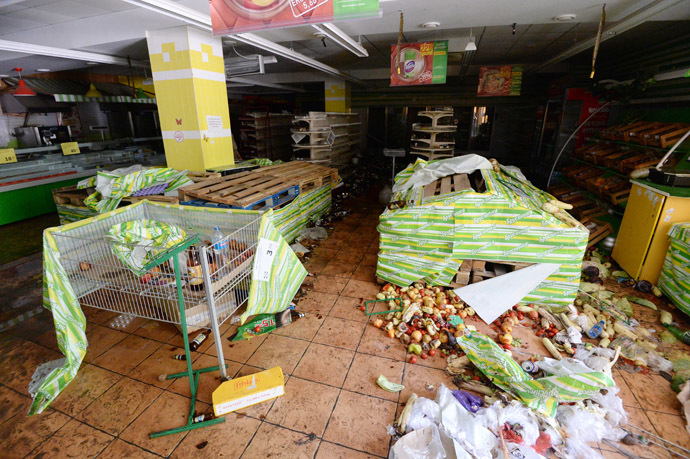











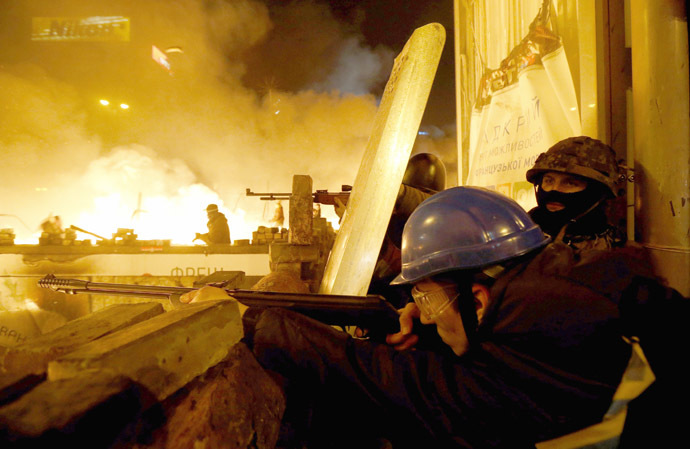


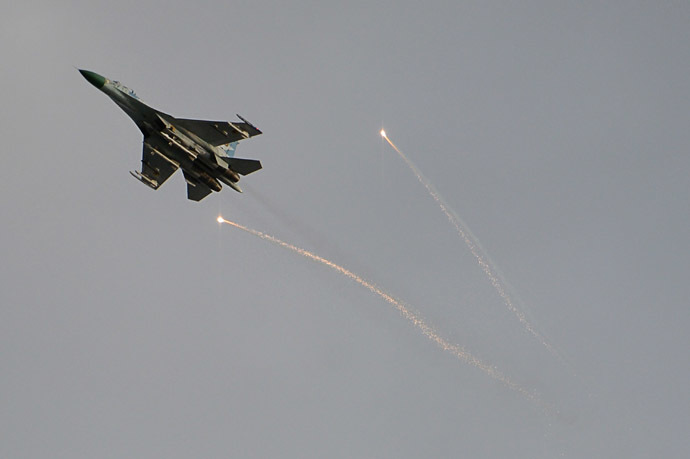
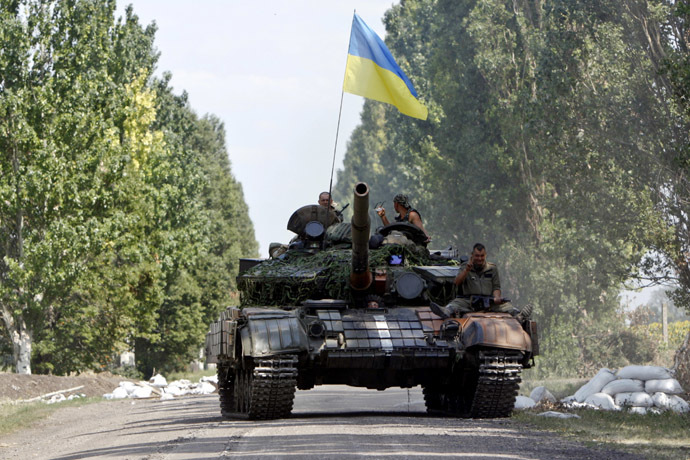

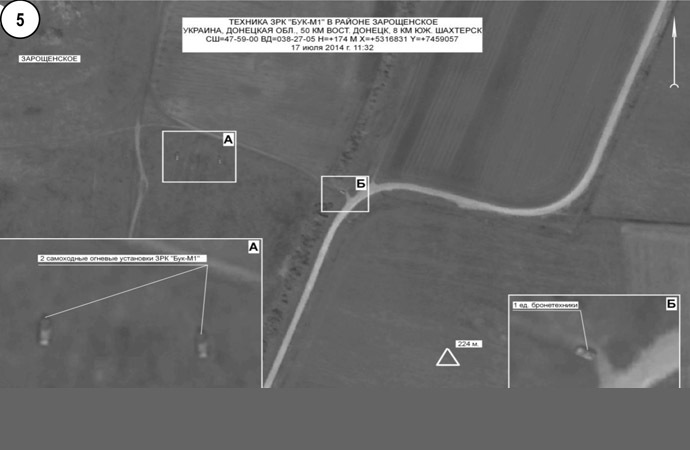
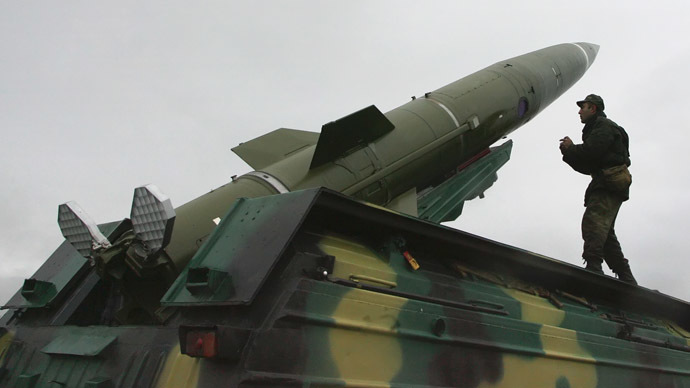







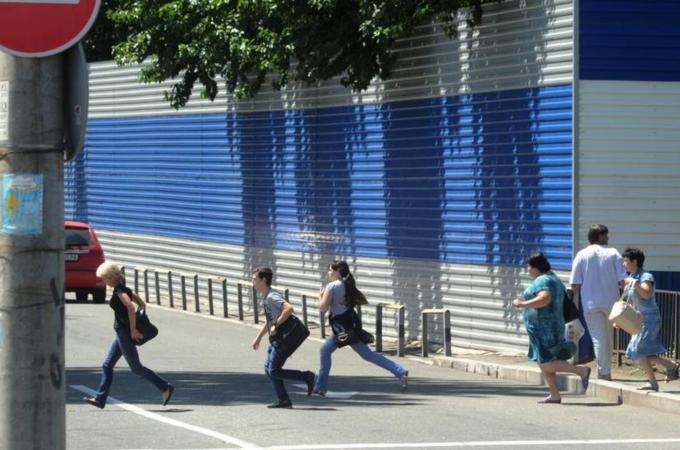
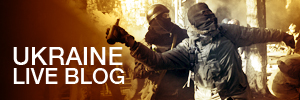
No comments:
Post a Comment